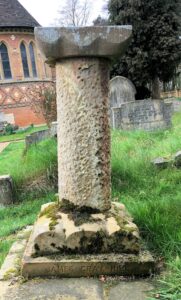
The first monument on the right as you enter the new churchyard is a stone column in memory of James Gray Hill who died on 29 December 1933 at Sherrards, aged 80 years. The column originally featured a brass sundial, but sadly this has disappeared.
James Gray Hill was born in Manchester in 1854 and was the son of Thomas Gray Hill and his wife Elizabeth (née Dickson) who married at St. Mary on the Hill, Chester on 21 January 1852. Thomas Gray Hill was an “East India Merchant” who was born in Edinburgh. His wife Elizabeth was born in Chester. It seems likely that James was their first child and his birth was registered in the Chorlton district of Lancashire.
James Gray Hill became an “East India Merchant” like his father. He married Christina Beatrice Gray on 17 February 1885 at St Stephen’s church, Kensington, London. Christina was the daughter of George Gray and his wife Eliza Annie (née Clarke) who married in Kennington, Surrey in 1858. George Gray was a dried fruit merchant, who was born in Scotland. Eliza was born in Suffolk. Due to the similar surnames and the Scotland connection, there is a possibility that James Gray Hill and Christina Gray were somehow related.
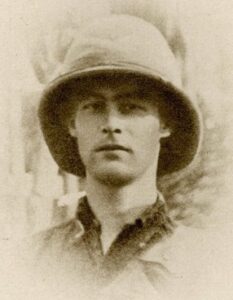
James and Christina Gray Hill had two children – a daughter Rosalind born on 1 December 1885 and a son Gordon born on 30 August 1888. Both births were registered in Lancashire. The census records show the family living in Didsbury, Lancashire in 1891 and 1901, and North Wales in 1911.
During the First World War the Gray Hills moved to Sherrards, Welwyn. They considered purchasing The Node in Codicote, but Sherrards won the day due to the proximity of the railway station. Their son Gordon died of natural causes on 16 July 1915 whilst serving with the Singapore Rifles. His death announcement described him as the “son of Christina and James Gray Hill of Manchester and Glandwr, Abergele”. However, the Commonwealth War Graves record gives the address as Sherrards, so presumably the family moved soon after his death.
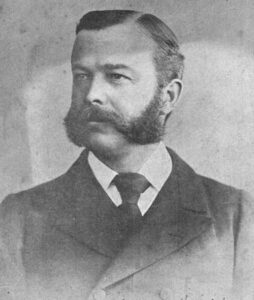
Christina Gray’s eldest sister, Marie Eliza, married the wealthy barrister Charles Joseph Henry Corbett in 1881. The couple were social reformers and both believed in “votes for women”. They owned an estate called Woodgate in the village of Danehill in East Sussex. Charles became the Liberal MP for East Grinstead and Marie was a district councillor and prominent suffragist. Their elder daughter, Margery, became an international feminist campaigner and Liberal Parliamentary candidate. Under her married name – Margery Corbett Ashby – she was awarded the DBE in the 1967 Birthday Honours list for her roles as Honorary President of the International Alliance of Women and Honorary President of British Commonwealth League.
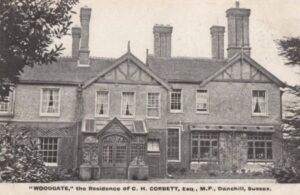

James and Christina’s daughter Rosalind was living in her uncle’s household in the 1911 census. She was the Club Secretary of the International Women’s Franchise Club Limited, and was aged 25. Her cousin Cicely Corbett, also aged 25, was a “suffrage lecturer”.
Six months after her brother’s death, on 8 January 1916, Rosalind married Robert Lancaster Trench-Watson at Exeter. The newspaper announcement of their wedding states that it was held “very quietly, owing to the war”. However, that year Robert was diagnosed with neurasthenia, which today we might call “post traumatic stress disorder”, and he relinquished his commission on account of ill-health on 8 December 1916. Later in the war he did temporary service with the Admiralty.
After the war, the Trench-Watsons lived at 28 Archbald Terrace, Newcastle upon Tyne, where they were both recorded on the electoral roll in 1920. However, the electoral roll of 1921 records just Rosalind at the address and on 28 April 1922 Robert sailed from Liverpool to Australia on the “Runic” (White Star line). Rosalind moved around over the following years – the electoral rolls show that she was at Great Russell Street, London in 1926. She was at Sherrards in both 1929 and 1930, quite probably to help care for her mother Christina, who died on 7 December 1930 aged 69. Rosalind may have stayed on at Sherrards until after the death of her father James in 1933.
Robert Trench-Watson made a new life for himself in Australia. In 1926 he married Ethel Amelia Arbuckle and they had a daughter born in 1930. In 1933 a private investigator hired by Rosalind found him living in a “humpy” (a primitive shack) with Ethel and the little girl, and Rosalind filed for divorce, which was finalised in October that year. Robert’s second wife Ethel Amelia died on 5 March 1936 aged 37.
In the 1939 register Rosalind was living at Ivy House in Potters Bar, Hertfordshire where she had her own business running a “market and nursery garden”. She described herself as a widow. Later electoral rolls show Rosalind living in Farnham, Surrey from 1949 to 1950 and Hampstead, London from 1950 to 1951.
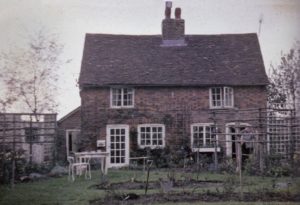
At some point in the 1950s, Rosalind moved back to Welwyn and lived with her mother’s former cook, Mrs Minnie Gray Matilda Jeeves at 13 Digswell Hill, the cottage on the Great North Road that was known as Jeeves Cottage. Minnie’s husband Harry died in January 1951, and Rosalind probably arrived afterwards, originally for a short stay, but she never moved out. Her passion was gardening and flowers, and she established a wonderful garden at Jeeves Cottage. She was a prominent supporter of the Ayots Horticultural Society and provided four trophies, which are still awarded every year.
Mrs Jeeves died in 1968 and Rosalind continued to live at Jeeves Cottage. She moved in some items from Sherrards that had been in storage for many years. Sadly, Jeeves Cottage was demolished to make way for the A1(M). Rosalind was devastated at the loss of her garden and died shortly afterwards on 27 August 1971 at the age of 85. Her ashes are buried in her father’s grave, although she is not named on the memorial. Her mother’s burial place is unknown.
Rosalind Trench-Watson is remembered by several people who lived around Ayot Green, and one of them who knew her well has kindly provided the following recollection: –
“Rosalind’s nursery garden business had closed when she came to live in Jeeves Cottage. It was meant to be a temporary arrangement staying with her mother’s old cook, but she ended up spending the rest of her life here. Rosalind lived upstairs and Mrs Jeeves had the ground floor. Rosalind constructed a miniature step ladder to the first-floor bedroom window for her cat to gain easy access. Rosalind always called Mrs. Jeeves “Mrs. Jeeves”, and Mrs Jeeves always called Rosalind “Madam”. After Mrs Jeeves died, Rosalind occupied the entire cottage.

Rosalind was usually in gardening clothes in Ayot but she spent extravagantly on clothes and hats, especially at Cresta Silks when it was in Welwyn Garden City (clothes were always expensive there). She also had a dear friend in London (who was a milliner) who made her hats. Rosalind said that she herself had opened a hat shop in Paris (probably between the wars) and she spoke faultless French.
She was always generous with money, with gifts, charities and good deeds, especially where animals were concerned. Every month, or possibly every week, a registered envelope would be delivered from Coutts Bank stuffed with crisp new bank notes. The envelopes were said to be connected to tea plantations in India from which she received a steady income without actually owning them. She was always vague about certain matters and one didn’t ask about such things!
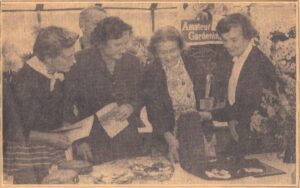
Apparently, when she was young, Rosalind had a serious condition affecting either her legs or back. She was told that the only thing that would save her from life as a cripple was to take up gardening, which is what she did. The garden at Jeeves Cottage was maintained by a gardener on a regular basis, but Rosalind was a hands-on gardener herself. The garden was not ‘pretty-pretty’ but a vehicle for the latest plants and was divided up into suitable beds. Every new plant, bulb, shrub, and so on, would be purchased for her garden – no expense spared. She was a founding member of the Ayots Horticultural Society (exhibiting there with success) and there are four trophies bearing her name that are still awarded every year.
Despite her gardening efforts, her nails were always perfectly manicured, and her hair expertly coiffed and coloured. She was cultured and quite avant-garde in her taste in music and art, and made regular London visits, when she was always immaculately dressed, in complete contrast to her Ayot garb.

She brought into the cottage some furniture and items that had been in store for many years including a bleached 18th century French jardinière which was apparently the first purchase made at the London shop of fashionable interior designer Syrie Maugham [the shop, in Baker Street, opened in 1922]. She had some other interesting items including a 17th century Dutch painting of dogs which she left to a friend with the request that it should subsequently be donated to a gallery in Oxford.
When Rosalind finally retired from the Horticultural Society she was presented with a hideous oil painting of a bowl of flowers. She hated it as it was of the worst chocolate box variety and had been suggested as a suitable gift by Lady Brocket who was a great admirer of the artist.”